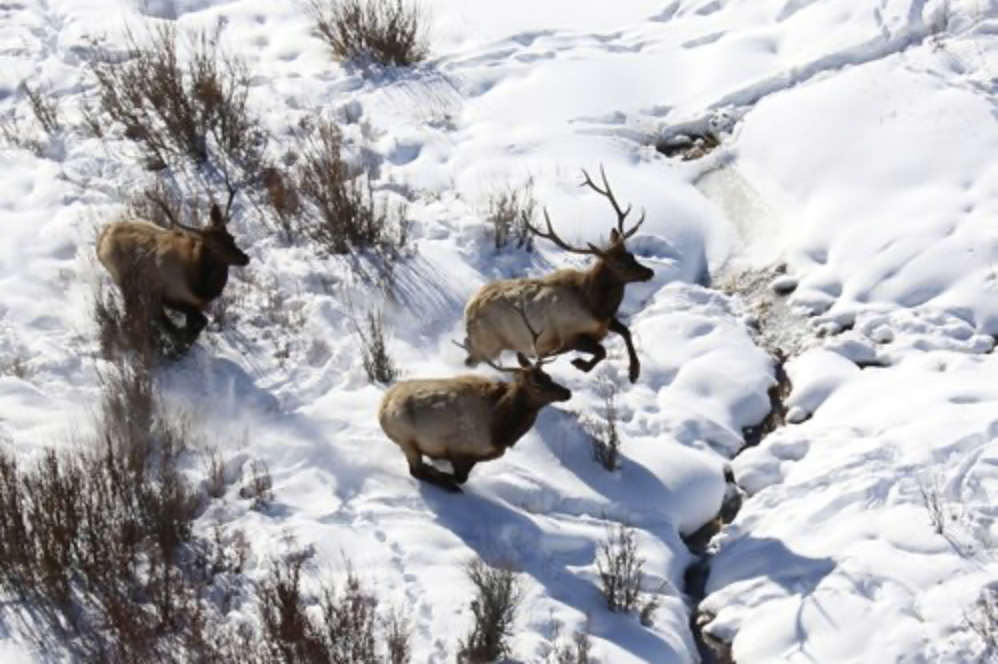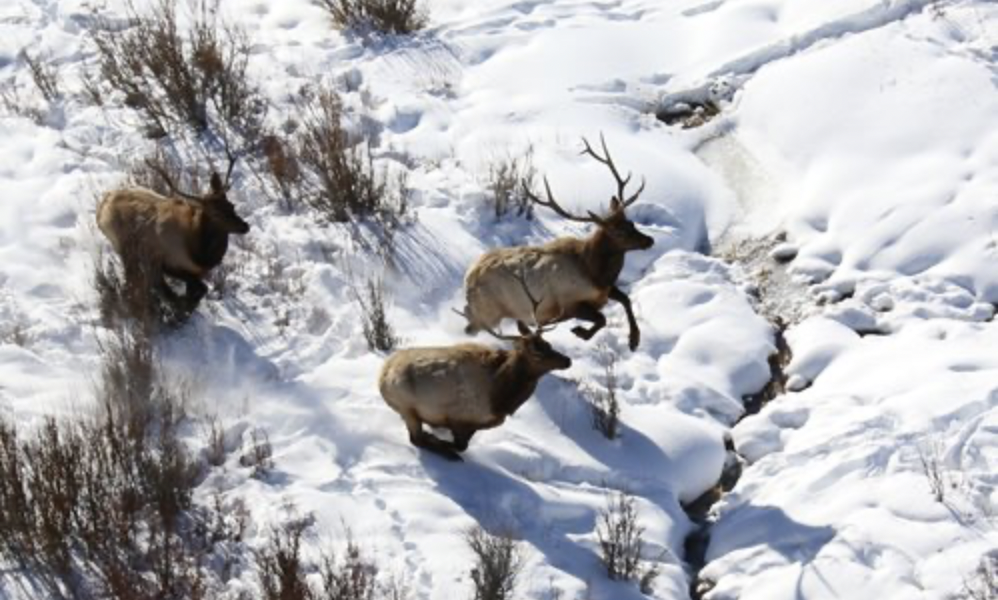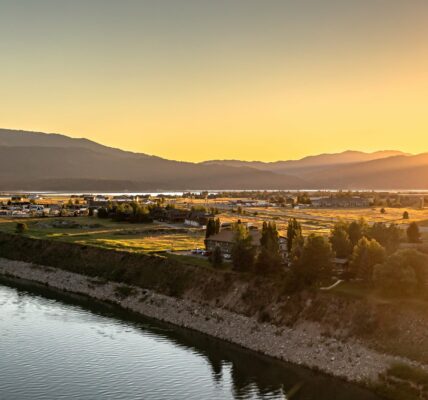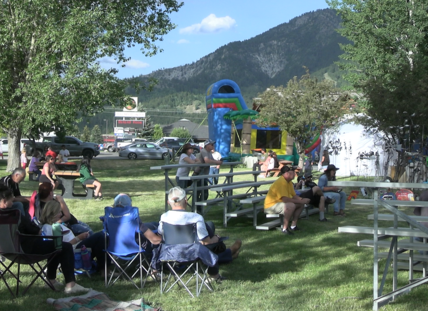Game and Fish initiates emergency elk feeding due to increase of damage, co-mingling with livestock

The following is a news release from the Wyoming Game and Fish –
CHEYENNE – Much of Wyoming is under a blanket of deeper-than-normal snow and experiencing severe, cold temperatures, causing elk to raid haystacks and livestock feedlines. Due to the increase in damage and the risk of co-mingling with livestock, Game and Fish Department officials have initiated emergency elk feeding in several locations in western Wyoming.
“Harsh winters are not uncommon in the West, but it has been a while since we have experienced winter conditions like this in western Wyoming,” said Doug Brimeyer, deputy chief of the Game and Fish wildlife division. “The deep snow and harsh winter conditions have pushed elk to lower elevations and habitats they don’t typically spend time at during the winter.”
Mule deer are not a targeted species for emergency feeding due to their inability to digest hay and disease concerns, like chronic wasting disease. Previous evaluations of deer feeding efforts in other states have not shown to be effective in reducing mortality. The public is reminded that each winter some big game mortality can be expected.
Game and Fish wildlife managers will continue monitoring winter conditions and elk distribution across the state. Wildlife managers encourage the public to help wintering wildlife by:
- Avoid disturbing wildlife during this critical time. During the winter wildlife survive on a diet lower in nutrition and will migrate to lower elevations where the habitat is better, more available and contains less disturbance to avoid burning unnecessary calories.
- Resist the urge to feed wildlife to help them through the winter. It is natural for people to feel compassion for struggling wildlife, but feeding can result in increased disease transmission and do more harm than good. Deer in particular have specialized digestive systems that are not adapted to hay, apples or corn.
- Leaving right-of-way fence gates open to allow unimpaired movement of animals across the landscape, especially along roadways may reduce potential wildlife-vehicle collisions. This also can help reduce damage to fences and prevent animals from getting entangled and dying. Many landowners have modified their fences to make them more wildlife-friendly by replacing the bottom wire with a smooth wire and lowering the top wire or adding a pole to the top.
- Avoid snowmobiling or recreating on low-elevation winter ranges. Opt for the high country with deeper snow where animals are less likely to be found.
- Motorists should plan to drive slower and pay close attention to animals along our roadways. Wildlife-vehicle collisions occur at a higher rate during the winter months.Research has shown that slowing down, even just five miles per hour, can greatly increase a driver’s reaction time to avoid a collision. This is especially important at dawn and dusk when animals are more active and harder to see.





